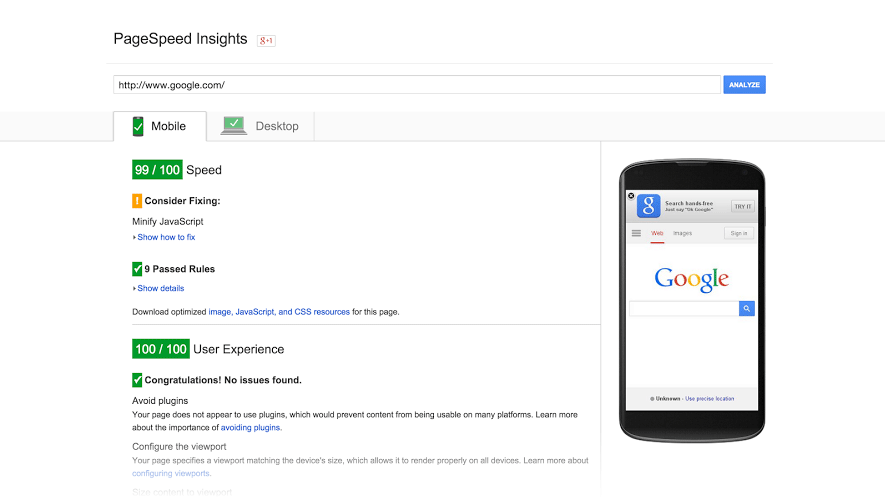What is m-commerce? M-commerce (the m stands for mobile) is the buying and selling of goods and services through smart phones, tablets, smart watches and smart glasses. More and more people are taking advantage of the convenience of buying and selling on the go.
This service has been around since 1997, but was limited to buying new ringtones for your Nokia 3310 and paying for services via text messaging. A far cry from the complex commerce that you can now undertake with a few touches.
Fast Loading Times
According to cloud hosting company Rackspace, retail sites must load in 10 seconds or risk losing a user to a competitor. Loading time is a major contributing factor to page abandonment. The average user has no patience for a page that takes too long to load, and justifiably so.
According to Kissmetrics, the typical mobile Internet user will wait, perhaps, 6-to-10 seconds for a page to load. A one-second decrease in page load time will result in about a seven-percent increase in conversion, so get optimizing.

Providing Payment Choices
Given the increasing prevalence of online identity theft and credit card fraud, shoppers are becoming more wary about giving out their credit card details.
World Pay estimates that payment systems such as PayPal, Apple Pay, Google Wallet, or pre-paid accounts will account for a massive 60% of m-commerce transactions in 2017. PayPal and AliPay alone will account for almost 40% of worldwide mobile sales.
Mobile abandonment rates exceed 80% when customers are asked to input their credit card details. If you’re still forcing your mobile customers to use their credit cards in 2017, expect to see them drift away to competitors who offer a safer, easier alternative.
Make It User-Friendly
Mobile users often search for information they need or want in that instant, which makes mobile buying an impulse, so if you want to do more extensive research – price comparison, tests, video footage etc. – you are more likely to use a bigger screen.
Ensure the “Add to Cart” and “Checkout” buttons, as well as your shopping cart icon, are easy to find and read. Place them at the top and bottom of every page, or on a sticky navigation bar, which sticks to the top of the screen when the customer scrolls down the page.
Bigger buttons are easier to see as well as easier to touch. Using our fingers to make selections on a screen is far from precise. As well as making buttons and links big enough to press easily, you should give each enough space from the other to reduce the chances of customers hitting the wrong one, e.g. between Back and Continue buttons.
Eliminate Non-Essential Purchasing Steps
Ask for as little new information as possible from existing customers. Feeding in too many details just to purchase a product can be an off-putting experience for anyone. Remember, most mobile customers prefer making purchases on the go and are therefore less likely to make it through a lengthy checkout process without abandoning their carts.
They should be able to check out with just their username and password — don’t ask them to re-enter their credit card, shipping and billing information. For example, PayPal’s payment processing links the payment and shipping information that is already stored in their PayPal account. Users can just confirm the order and click “Buy Now”.
Ensure a Tailor-Made Mobile Experience
With growing competition in the m-commerce sector, personalising the mobile shopping experience of every customer is becoming essential. As the way customers shop on mobile devices can vary so much from desktop, providing customers with a tailor-made experience through mobile can go a long way in boosting your profits.
Mobile shoppers expect to be able to use nearly all of the same features as desktop shoppers. Rather than just scaling down a desktop website to accommodate the smaller screen size and slower download speeds, it is recommended that brands devise bespoke content that is optimised for a variety of devices.
Personalise your customers’ mobile shopping experience by offering personalised product discounts and product recommendations, and by creating location and time specific messages. You can also personalise content based on the maturity of your customer relationship and engagement levels.
Conclusions
With the m-commerce market growing globally, more traditional marketers will recognize this opportunity to engage their consumers through mobile devices and apps. This means that they won’t be as single-channel dependent and will be better able to adapt to changing markets.
Further Reading
http://www.mobyaffiliates.com/blog/mobile-advertising-statistics-roundup-2016/
https://techcrunch.com/2016/08/06/demystifying-the-booming-mobile-advertising-market/
http://www.ppchero.com/category/ecommerce-ppc/
https://www.emarsys.com/en-uk/resources/blog/seo-ppc-important-e-commerce/
http://uk.businessinsider.com/mobile-commerce-shopping-trends-stats-2016-10
https://www.ecommercewiki.org/Mobile_Commerce/Mobile_Commerce_Basic/What_is_mobile_commerce
http://searchmobilecomputing.techtarget.com/definition/m-commerce
Author Biography
Fred
Fred has been working at Kumo since 2017, in paid marketing. As a PPC Marketer, he is responsible for implementing and overseeing PPC campaigns for Kumo's clients, on paid marketing platforms such as Google Ads and Bing Ads.